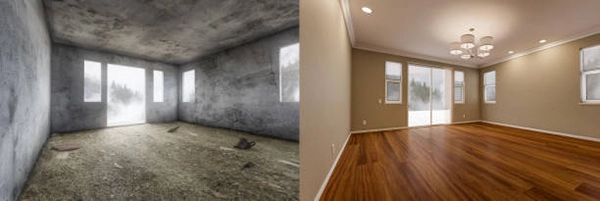
Love your home but hate the cost of updating it? Renovations can feel overwhelming — like you need a tradie army, a six-month timeline, and half your life savings. The good news? You don’t need any of that. Whether it’s just a new lick of paint in your bedroom or converting your garage into a gym, there are plenty of ways to update your house that won’t empty your bank account. In this guide, we’ll walk you through real-life, low-cost home updates that can be done over a weekend, a few weeks, or chipped away at across a few months.
Why Small Changes Matter
Minor updates can have a big effect on how your home feels and functions. Even minor changes can improve your mood, increase your enjoyment of your house, and foster a feeling of serenity and self-worth. Financially, these updates can boost your resale value or help you get more bang for your buck on a day-to-day basis. You don’t need to knock down walls or gut the kitchen to see a real difference — sometimes a simple fix like a new light fixture or fresh cabinet handles is all it takes.
The point is, updates don’t have to be expensive or time-consuming. With the right plan and a little creativity, you can fall in love with your home all over again without breaking the bank or burning out.
Smart Planning Framework
Before you dive in, get smart with your planning. As a general guideline, allocate 1% of your home’s value each year for cosmetic updates. Next, take high-impact, high-visibility areas first, like your entryway, living room, or kitchen. If you’re short on time, think in “weekend warrior” blocks: quick updates for now, longer projects later.
For example, paint the bathroom one weekend, update the lighting the next, and then work on the kitchen over a few weeks.
Core Sections
Paint: The Ultimate Refresh
Paint is the quickest way to revive a room. Try an accent wall, update tired cabinets, or freshen up your front door or skirting boards. Leftover paint or sample pots can save you heaps. Get some chalk paint for your furniture; it’s easy to use and gives worn-out pieces a fresh look.
Lighting Magic
Outdated lighting? Swap fixtures, add dimmer switches, or stick-on LED strips for instant mood upgrades. Smart bulbs are energy-efficient and add ambience. Don’t overlook plug-in pendant lights; they’re easy to install and add character to your room without spending big.
Hardware Swap-Outs
Fixing door knobs, tapware, or cabinet handles is a small task that has a big impact. It is quick, easy, and requires few tools. Explore budget-friendly options at Bunnings, IKEA, or online retailers. Matte black or brushed brass finishes add modern flair for under $10 per item.
Window Dressing Updates
Curtains and blinds change everything — light, mood, and privacy. Use sheer fabrics for a soft glow or layer them for added texture. Affordable options are everywhere, and even simply adjusting the way curtains are tied back can shift the vibe.
Stylish Storage Solutions
Declutter while decorating with floating shelves, cube storage, and pegboards. Baskets and boxes add warmth and style while keeping things tidy. Look for multi-functional furniture like ottomans with storage or side tables with drawers — they work harder and look great doing it.
Wall Art & Décor Tweaks
As the seasons change, switch up your wall art and décor. Use removable wallpaper, decals, or create a gallery wall from DIY prints or op-shop finds. Online, you can find a lot of free printable art that you can frame and hang. It’s personal, creative, and budget-friendly.
Money-Saving Strategies
You don’t need to spend big to get a big return. Set a realistic max spend per room and look to reuse what you have. For excellent deals, check local buy, swap, and sell groups, online marketplaces, and clearance stores.
Upcycle where you can — an old dresser can become a bathroom vanity or hallway console. Decide what to DIY and what’s worth getting help with.
Basic tasks, like painting or assembling furniture, are great for beginners, while electrical or structural changes might need a professional. Invest in tools you’ll often use (like a good drill or measuring tape), but borrow or hire specialty ones.
Give priority to high-impact spaces like your entryway, bathroom, and kitchen.
Common Pitfalls to Avoid
Don’t skip prep work — rushing a paint job or skipping measurements typically results in more costly fixes later. Stick to your budget and track every cost, even small ones — they add up. Refrain from following trends that don’t fit your house or way of life. It’s acceptable to ask for assistance; just be realistic about your time and ability.
Updating your home doesn’t need to be expensive, stressful, or time-consuming. By starting small and working room by room, you’ll build confidence and see results faster than you think. With a little creativity, some planning, and smart spending, you can breathe new life into your home without dipping into your life savings. So go on, which room will you tackle first? Start small, stay consistent, and enjoy the transformation.






